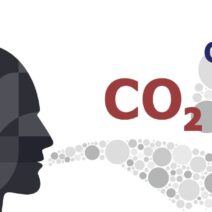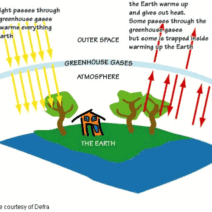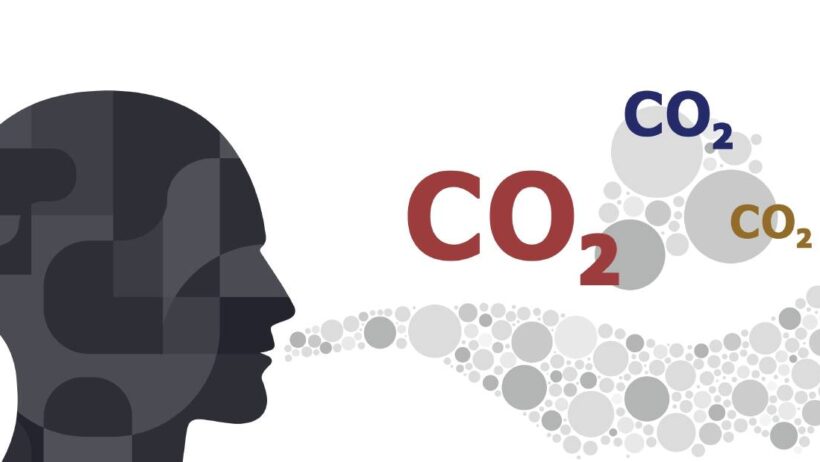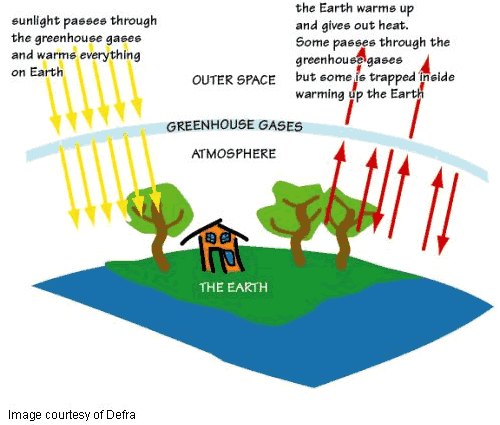In the ongoing discourse surrounding climate change and its myriad contributing factors, the question of human respiration often surfaces. Given that humans exhale carbon dioxide (CO2), a gas that is fundamental to the greenhouse effect, it raises the intriguing question: does human breathing significantly contribute to global warming? To unravel this conundrum, we must delve into the intricacies of human physiology, atmospheric science, and the broader environmental implications.
At the most fundamental level, human beings are aerobic organisms, relying on oxygen for metabolism. In this biological process, oxygen is consumed, and carbon dioxide is a natural by-product of energy production at the cellular level. On average, a person exhales approximately 1 kilogram (2.2 pounds) of CO2 daily. This seemingly innocuous release, if quantified across the entire human population, aggregates to a staggering amount. However, before ascribing blame to the act of breathing itself, it is essential to contextualize this output within a global framework.
The current human population is over 8 billion. Collectively, humans exhale around 8 billion kilograms of CO2 daily. This figure may appear daunting at first glance; however, in environmental science, it must be weighed against the overall carbon budget of the planet. The Earth’s atmosphere routinely maintains a certain level of CO2—natural sources contribute roughly 20 times more CO2 than humans through respiration alone. Natural processes, including volcanic eruptions, oceanic emissions, and respiration from flora and fauna, release far greater quantities of carbon dioxide than humans could ever hope to contribute through mere breathing.
Moreover, in assessing the impact of CO2 exhaled by humans, it is vital to differentiate between “new” carbon and “old” carbon within the carbon cycle. The carbon dioxide exhaled by humans is part of a closed-loop system, as it is carbon that has already existed in the atmosphere or has been part of the biological cycle for eons. This stands in stark contrast to the carbon released from fossil fuel combustion, which introduces “new” carbon into the atmosphere—carbon that has been sequestered underground for millions of years. This differentiation is crucial in understanding the true drivers of climate change.
The overwhelming consensus among climate scientists is that anthropogenic CO2 emissions from fossil fuel combustion, deforestation, and industrial processes dwarf any potential effects of human respiration on global temperatures. These activities release millions of metric tons of anthropogenic CO2 that accumulate in the atmosphere, trapping heat and leading to global warming. In essence, rather than focusing on individual respiration as a culpable factor, it is essential to redirect our efforts toward addressing these larger systemic issues.
Yet, the fascination with the idea that breathing contributes to global warming cannot be dismissed outright. Observing the natural and almost intimate act of breathing ties us directly to the environmental conversation. It frames a narrative that connects us as individuals to the broader complexities of our ecological footprint. The simple act of exhaling becomes a symbol of our existence, prompting a deeper reflection on our relationship with the planet and the systems we engage with on a daily basis.
Furthermore, the fixation on human respiration encourages critical dialogue about lifestyle choices and sustainable practices. It compels us to examine the carbon footprint of our entire existence—not just the CO2 we exhale. For instance, dietary choices, energy consumption, and transportation methods significantly contribute to our overall greenhouse gas emissions. An increased focus on these elements can lead individuals to adopt more sustainable practices, ultimately resulting in a more significant reduction in their personal contributions to climate change.
Additionally, this conversation can segue into the role of reforestation and carbon sequestration. Trees and plants breathe in carbon dioxide, converting it into oxygen through the process of photosynthesis. Thus, while we may produce CO2 with every breath, nature provides a counterbalance. The act of planting trees, restoring ecosystems, and conserving biodiversity becomes essential as we strive to mitigate the impacts of CO2 emissions on climate change. This symbiotic relationship between human activity and the natural world underscores the importance of teamwork in the fight against global warming.
In conclusion, human breathing, when examined in isolation, does not significantly contribute to global warming. It serves as a reminder of our existence within a complex ecosystem, yet the compelling narrative lies in acknowledging the larger sources of greenhouse gas emissions. As we breathe in, we must also breathe out awareness—awareness of the profound impacts of our choices and the responsibility we hold toward future generations. Our task is not merely to contemplate the carbon we exhale but to engage in actionable solutions that address the profound challenges posed by climate change. Thus, the narrative of breath, life, and responsibility intertwines, guiding our path toward sustainability.






